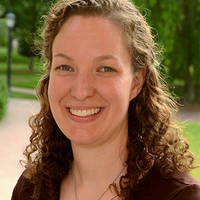
Elizabeth Robinson
Elizabeth C. Robinson is Associate Professor of Classics at the University of Dallas Rome Program. She received her Ph.D. in 2013 from the University of North Carolina at Chapel Hill with a dissertation entitled, "The Impact of Roman Expansion in Central-Southern Italy: The Case of Larinum." Before teaching for the University of Dallas, she spent the 2014-2015 academic year as an Assistant Professor of Classics at the University of Binghamton and the 2013-2014 academic year as an Assistant Professor at the Intercollegiate Center for Classical Studies in Rome.
Her most recent publications include Urban Transformation in Ancient Molise: The Integration of Larinum into the Roman State (OUP 2021), the article on "Larinum" in the digital edition of the Oxford Classical Dictionary, and an edited volume for the Journal of Roman Archaeology (Papers on Italian Urbanism in the First Millennium B.C. - Supplement 97).
Her dissertation is an archaeological and historical study of the continuities and changes that took place in the political, social, and cultural spheres at the site of Larinum over a five hundred year period (400 BCE to 100 CE) as the site transitioned from being an independent community to being a Roman municipium. She has presented material relating to her research on Larinum at the 113th, 114th and 116th Annual Meetings of the Archaeological Institute of America in Philadelphia, PA in 2012, Seattle, WA in 2013, and New Orleans, LA in 2015. She has also presented at international conferences, including the “Integration and Identity in the Roman Republic” conference in Manchester in June of 2010, whose proceedings were published by Brill as Processes of Integration and Identity Formation in the Roman Republic, edited by S.T. Roselaar, the "Processes of Integration in the Roman World (300 BC - AD 200)" conference in Nottingham in July 2013, and the "People of the Ancient World" conference in Cluj-Napoca. She has also made presentations at several venues in Italy, including local cultural gatherings in Molise in 2010 (the Fiera di Ottobre in Larino) and 2011 (D'Estate Faifoli in Montagano), a meeting of the Associazione Internazionale di Archeologia Classica in Rome in 2011, the 16th Symposium on Mediterranean Archaeology in Florence in 2012, and the Symposium Peregrinum in Tarquinia in 2016.
Elizabeth's M.A. thesis (Rural Settlement Patterns and Sanctuaries in the Middle Volturno Valley) allowed her to combine her interests in pre-Roman Italy and Italic religion, while allowing for a thorough exploration of Samnite settlement patterns in the eastern part of Campania. Research from her thesis was presented at the 2008 Annual Meeting of the Archaeological Institute of America, and was published in the journal Ostraka in 2009.
Her fieldwork experience includes a season of excavation at Paestum, two seasons of fieldwork with the Upper Simeto Valley Survey, several seasons of fieldwork with the Gabii Project, and two campaigns as director of the resurvey of previously discovered archaeological sites in the area surrounding Larinum. As a staff member for the Upper Simeto Valley Survey, she was in charge of collection, management and interpretation of GPS and GIS data. She currently serves as the Regional Topography and Digital Data Coordinator on the topography team for the Gabii Project.
Elizabeth's primary research interests focus on the cultural and physical landscapes of Italy in the first millennium BCE, Italian urbanism, and the nature of Roman interactions with the other inhabitants of the Italian peninsula in this period. Her current interest is in central-southern Italy.
Her other interests include GIS and digital mapping, the integration of digital technologies in the field of Classics, and cultural heritage protection. She has had ample experience using GIS and digital mapping techniques in the field in Sicily and peninsular Italy. She also spent two years as the Acting Director of the Ancient World Mapping Center at UNC, where she further explored digital cartography and helped to create and publish a new series of seven classroom maps of the ancient world, currently available from Routledge as part of their “Wall Maps for the Ancient World” series.
Her most recent publications include Urban Transformation in Ancient Molise: The Integration of Larinum into the Roman State (OUP 2021), the article on "Larinum" in the digital edition of the Oxford Classical Dictionary, and an edited volume for the Journal of Roman Archaeology (Papers on Italian Urbanism in the First Millennium B.C. - Supplement 97).
Her dissertation is an archaeological and historical study of the continuities and changes that took place in the political, social, and cultural spheres at the site of Larinum over a five hundred year period (400 BCE to 100 CE) as the site transitioned from being an independent community to being a Roman municipium. She has presented material relating to her research on Larinum at the 113th, 114th and 116th Annual Meetings of the Archaeological Institute of America in Philadelphia, PA in 2012, Seattle, WA in 2013, and New Orleans, LA in 2015. She has also presented at international conferences, including the “Integration and Identity in the Roman Republic” conference in Manchester in June of 2010, whose proceedings were published by Brill as Processes of Integration and Identity Formation in the Roman Republic, edited by S.T. Roselaar, the "Processes of Integration in the Roman World (300 BC - AD 200)" conference in Nottingham in July 2013, and the "People of the Ancient World" conference in Cluj-Napoca. She has also made presentations at several venues in Italy, including local cultural gatherings in Molise in 2010 (the Fiera di Ottobre in Larino) and 2011 (D'Estate Faifoli in Montagano), a meeting of the Associazione Internazionale di Archeologia Classica in Rome in 2011, the 16th Symposium on Mediterranean Archaeology in Florence in 2012, and the Symposium Peregrinum in Tarquinia in 2016.
Elizabeth's M.A. thesis (Rural Settlement Patterns and Sanctuaries in the Middle Volturno Valley) allowed her to combine her interests in pre-Roman Italy and Italic religion, while allowing for a thorough exploration of Samnite settlement patterns in the eastern part of Campania. Research from her thesis was presented at the 2008 Annual Meeting of the Archaeological Institute of America, and was published in the journal Ostraka in 2009.
Her fieldwork experience includes a season of excavation at Paestum, two seasons of fieldwork with the Upper Simeto Valley Survey, several seasons of fieldwork with the Gabii Project, and two campaigns as director of the resurvey of previously discovered archaeological sites in the area surrounding Larinum. As a staff member for the Upper Simeto Valley Survey, she was in charge of collection, management and interpretation of GPS and GIS data. She currently serves as the Regional Topography and Digital Data Coordinator on the topography team for the Gabii Project.
Elizabeth's primary research interests focus on the cultural and physical landscapes of Italy in the first millennium BCE, Italian urbanism, and the nature of Roman interactions with the other inhabitants of the Italian peninsula in this period. Her current interest is in central-southern Italy.
Her other interests include GIS and digital mapping, the integration of digital technologies in the field of Classics, and cultural heritage protection. She has had ample experience using GIS and digital mapping techniques in the field in Sicily and peninsular Italy. She also spent two years as the Acting Director of the Ancient World Mapping Center at UNC, where she further explored digital cartography and helped to create and publish a new series of seven classroom maps of the ancient world, currently available from Routledge as part of their “Wall Maps for the Ancient World” series.
less
Related Authors
Giusto Traina
Université Paris-Sorbonne (Paris IV)
Alejandra B Osorio
Wellesley College
Enrico Cirelli
Università di Bologna
Florin Curta
University of Florida
Laurajane Smith
The Australian National University
Carlos Machado
University of St Andrews
Massimiliano Di Fazio
University of Pavia
Francesco Camia
Università degli Studi "La Sapienza" di Roma
Emily Hammer
University of Pennsylvania
Andrea Squitieri
Ludwig-Maximilians-Universität München
InterestsView All (25)
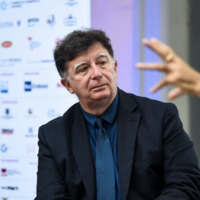



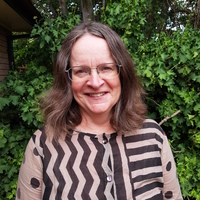

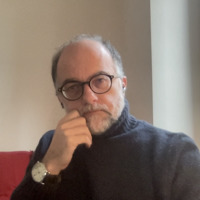

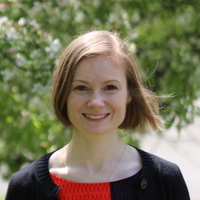
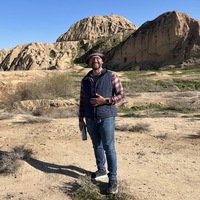
Uploads
Books by Elizabeth Robinson
In questo volume si analizzano tutte le possibili testimonianze utili a creare una biografia del sito di Larinum dal 400 a.C. al 100 d.C. ponendo particolare enfasi sulla trasformazione urbana che ebbe luogo durante la conquista romana. Il libro si caratterizza inoltre per il vaglio di una diversificata tipologia delle fonti d'informazione che spazia dai documenti litterari (incluso il Pro Cluentio di Cicerone) alle tracce di insediamenti, alle iscrizioni, ai monumenti, ai manufatti e sottolinea l'importanza della variabilità delle situazioni locali negli studi sulla conquista romana fornendo un resoconto che va a integrarsi con lavori di portata generale e più ampi sullo stesso tema.
To stimulate synergy, this volume brings together an international group of experts from different fields and backgrounds. It opens up the discussion by offering fresh viewpoints and new evidence for the political organization, social life, mountain settlement, cults and cult sites, and finally the character of Samnite and Roman expansionism.
This book uses all the available evidence to create a site biography of Larinum from 400 BCE to 100 CE, with a focus on the urban transformation that occurred there during the Roman conquest. This study is distinctive in utilizing many different types of evidence: literary sources (including the Pro Cluentio), settlement patterns, inscriptions, monuments and artifacts. It highlights the importance of local isolated variability in studies of Roman conquest, and provides a narrative that supplements larger works on this theme.
Papers by Elizabeth Robinson
Cartographic Publications by Elizabeth Robinson
In questo volume si analizzano tutte le possibili testimonianze utili a creare una biografia del sito di Larinum dal 400 a.C. al 100 d.C. ponendo particolare enfasi sulla trasformazione urbana che ebbe luogo durante la conquista romana. Il libro si caratterizza inoltre per il vaglio di una diversificata tipologia delle fonti d'informazione che spazia dai documenti litterari (incluso il Pro Cluentio di Cicerone) alle tracce di insediamenti, alle iscrizioni, ai monumenti, ai manufatti e sottolinea l'importanza della variabilità delle situazioni locali negli studi sulla conquista romana fornendo un resoconto che va a integrarsi con lavori di portata generale e più ampi sullo stesso tema.
To stimulate synergy, this volume brings together an international group of experts from different fields and backgrounds. It opens up the discussion by offering fresh viewpoints and new evidence for the political organization, social life, mountain settlement, cults and cult sites, and finally the character of Samnite and Roman expansionism.
This book uses all the available evidence to create a site biography of Larinum from 400 BCE to 100 CE, with a focus on the urban transformation that occurred there during the Roman conquest. This study is distinctive in utilizing many different types of evidence: literary sources (including the Pro Cluentio), settlement patterns, inscriptions, monuments and artifacts. It highlights the importance of local isolated variability in studies of Roman conquest, and provides a narrative that supplements larger works on this theme.